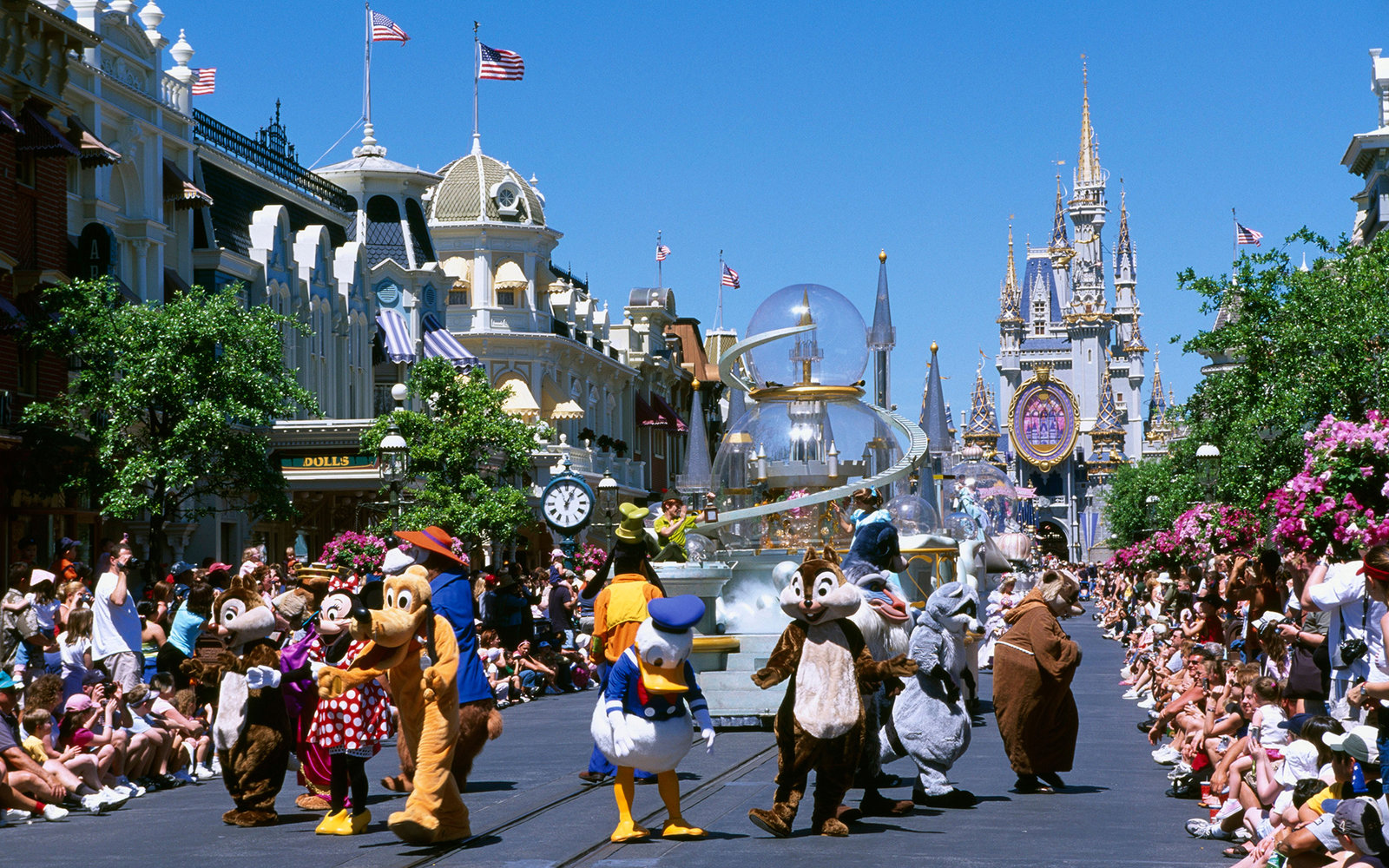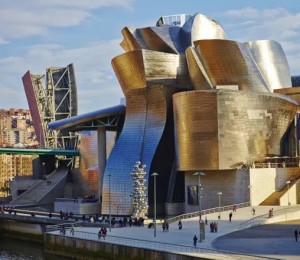
Magic Kingdom, Disneyworld, Disney World, Orlando
Derek Casey needs no introduction. Casey is the expert on leisure and the international development of cities. As Chief Executive of the UK Sports Council, Scottish-born Casey was responsible for the establishment of the Sports Lottery fund in the UK, and as a bid director he was successful in bringing the Commonwealth Games to Glasgow in 2014. Casey was chairman of the board of the World Leisure Organisation for nine years until 2013 and he has been appointed as Chair Emeritus since. We invited Casey to share some of his thoughts and opinions on the Leisure Factor with us for this issue of MMNieuws.
Leisure has increasingly become a major driver of city development worldwide. You often place the growing importance of leisure in the context of the nineteenth century when leisure policies where first enacted. Can you explain this?
The nineteenth century saw a tiny rich population and a great majority of the population in poverty. The masses were working twelve hour days, six days a week. Some enlightened reformers started to realize that better working conditions were needed to get a better workforce. There was more attention for better living conditions, and for leisure which was considered healthy for body and mind. But the first big change came in terms of paid holidays. In the earlier twentieth century the workers got at least one week off work. The changing working conditions, combined with the commercial sector getting involved in transport, railways and the construction of specialist resorts around the coast, were essential for the new way of thinking about leisure. Railways promoted deals towards coastal cities like Blackpool or Bridlington in the UK. Leisure itself did not change in a big way, but the fundamentals started here. Often it resulted in a paternalistic provision of leisure for the poorer community to make them better people. I find it interesting that, growing up in the 1950’s and 1960’s, almost nothing had changed in terms of leisure facilities. Football stadia, athletic tracks, libraries, theatres, museums were the same as in the first decades of the century.
What’s the importance of the upcoming middle class for the rapid ‘massification’ of leisure since the middle of the twentieth century?
When post war constructions started you began to see the movement in the growth of the middle classes. There was still a small rich group, but the poorer group declined. The upcoming middle classes encouraged new patterns of leisure. They had more time because of paid holidays, more aspirations to improve themselves, more means available for leisure consumption and more demand for choice in leisure. In the late 1960’s all sorts of government acts emerged which recognized leisure as an important quality for people. These were positive developments, but also quite recent. The first public sports center in the UK was built only in 1964. In the same decade starting demand for foreign travel arose. Cheap package holidays in resorts like Rimini and Benidorm boomed. In the cities you began to see new administrative structures to promote leisure. Provision of leisure facilities became important. However it was not until 1970 in the UK that the first local department on leisure and recreation started. The focus on leisure as a part of quality of life in city strategies emerged with the further growth of middle classes. They had more disposable income, were better educated, became healthier and lived longer. All those social, cultural and economic elements played a huge role in the increasing demand on quantity and quality of leisure provision at that time.
Is this a typical western development or do you see this transition as a worldwide phenomenon? Maybe even in a faster sequence of phases?
Indeed, the same pattern is happening in China at the moment but in a much shorter period of time. They needed only 25 years to go through the same development that took the West 150 years. In a similar way to the West decades ago, you now see a highly educated workforce, movement to the cities, increasing demand to travel abroad and growing provision of leisure. The middle class in China will grow from 300 million to 1.46 billion in 2030. What is interesting in China is that the government focus their strategies for the next five years on both economic development and quality of life. Wider than just leisure, but leisure is a big element in meeting new demands for quality of life. Where middle class development takes place the demand for leisure opportunities grows. For example, sub-Saharan economies like Tanzania, Angola and Botswana are all getting stronger, leading to the development of their middle classes and associated growing demands.
Recently the Dutch National Bank (DNB) warned for the decrease of the middle class in The Netherlands and the fact that this will lead to a decrease of disposable income. What impact will this have on the leisure infrastructure of cities in the future?
It’s very interesting that while Asian middle classes are booming, the middle classes of Western Europe and the USA are declining. You almost see the pattern of the 1950’s and 1960’s reversing itself with an older population with less disposable income. The number of people who have been forced into poverty is quite extreme, especially in the USA. Sport participation is changing and decreasing. It will absolutely change the leisure infrastructure in the cities. For example, there is an aging population that will be less physically active. The commercial sector is often the first to notice the emergence of new markets. Fitness clubs for example are changing from huge rooms with machines to centers for more gentile activities. Of course you could also look at the rise of companies like Airbnb with their strapline ‘Live here’. It is more and more about personal experiences. People don’t just want to see things but experience things.
Leisure is often put in the perspective of the worldwide competition of cities in attracting tourists, companies and citizens. The number of competitors seems endless at the moment. What strategies do you recognize in the search for unique propositions?
Despite cultural, economic, and political differences, city strategies all around the world are remarkably similar. I believe they all can be summarized in six words: wealthier, safer, greener, healthier, fairer, smarter. The first of the six is related to economic growth and the rest towards the quality of life. Many cities now recognize the value of leisure and the number of cities that use leisure in their overall strategies increases. Leisure can be the differentiating factor if you want to attract companies or increase livability. You see the same pattern all around the world with different focal points. It’s interesting to see old (industrial) cities in the UK trying to become more creative cities, but they often can’t compete with the Eastern European cities like Budapest or Warsaw. Those ‘New Kids on the Block’ are strongly investing in leisure and succeed in attracting investment. Competition through leisure also occurs in China. Qingdao calls itself the City of Sails. As well as being famous for its pandas, Chengdu styles itself the City of Gastronomy. Elsewhere, Orlando (so-called Fantasy City) has developed around attractions and theme parks.
Peter Horsten en Simon de Wijs:
People now often want the combination of global and local. They may go on a safari but want to sleep in the Hilton at night. Or they visit a local festival but book through Airbnb.Another important and recent way for differentiation is the investment in iconic buildings as the catalyst for change. The Opera House in Sydney and the Titanic Centre in Belfast both function as key attractions for tourism, as does the Guggenheim Museum in Bilbao. These iconic buildings are as important as natural attractions such as Table Mountain in Cape Town or the natural beauty of many Caribbean Islands. The best strategies make sure provision and activities for tourists, companies and citizens are in line. They should not be divorced. Dundee in Scotland is investing in the Victoria and Albert Museum of Design, but without improvements like transport links or new hotels it may not have the desired strategic effect. Good examples of comprehensive and integrated strategies are Barcelona and Turin.
Leisure can help, but it is not always the panacea or solution in cities wanting development. The social and economic structures have to be taken into account. For example Glasgow, the city that has spent most on leisure per capita in recent decades, has low educational attainment, low life expectancy and other social challenges. You can’t solve these only through leisure provision.
What’s crucial in making a good choice for leisure investment?
Having a broad city strategy is fundamental to make the right choice for leisure investments, in facilities, events or otherwise. Leisure needs to be part of the strategy instead of leisure as the strategy. An annual survey in the UK on European cities and their ability to attract inward investment underlines this importance. It is instructive to see that cities like Barcelona, which used leisure as part of their strategy, moved up in the ranking in the past twenty years. Before then, Barcelona was very poor but they made leisure a key part of creating a better city and providing better quality of life for the community. Bilbao is another good example in which investment in a flagship like the Guggenheim has been incorporated in a bigger masterplan. On the contrary, the flagship World Soccer stadium in Cape Town was originally planned to have a sustainable effect on the nearby townships. However the authorities changed plans and decided to build it on a ‘nicer’ location, diminishing its effect on economic and social growth.
Looking at investing in the Winter Olympics, Turin is a good example of a long term approach towards diversification, an emphasis on quality, and community involvement. The Winter Olympics were part of the larger Turin strategy. Turin succeeded in changing its image from a working class city to a high end shopping and slow food gastronomic city. The Olympics were part of the overall strategy, functioning as a show-case of these changes. In Sochi on the other hand, the Olympics were the strategy in itself. There was little community consideration and there was emphasis on success at any cost. The Olympics weren’t part of broader city development. As we look forward to the next Olympics, how does the population in Rio de Janeiro benefit in a financial or social way? Will safety in the neighborhoods increase? Will the economic benefits accrue? I dare to predict large-scale sports events are under threat. Not only because of safety and the threat of terrorism; people are not prepared to accept financial and political corruption. The benefits of this kind of event are often over-exaggerated and the costs are underestimated. Major sporting events highlight weaknesses rather than emphasize strengths. Many western countries seem to have given up bidding. The London Olympics might be the last large event in a democratic host country. At the moment all bids are done by BRICS countries: Brazil, Russia, India, China, South Africa and the next wave of so-called MINT: Mexico, Indonesia, Nigeria, and Turkey. These emerging economies so often want to promote their emergence on the world stage through staging major events – often prematurely and naively rather than through emphasizing indigenous activities such as the Rio Carnival.
An important aspect we recognize in the stories of The Beatles in Liverpool or Jheronimus Bosch in Den Bosch is the fact that these icons lived and produced their most famous works in cities. Back then the city was their reference. Globalization nowadays makes art, artists, icons and stories less bound to cities or regions. The reference of many modern artist is the global stage. Is that a threat for the local differentiation of cities on the long run?
Ten years ago I would have said yes. Uniformity and fake experiences were often the case; every city looked alike. But things have changed. People now often want the combination of global and local. They may go on a safari but want to sleep in the Hilton at night. Or they visit a local festival but book through Airbnb. What I see happening now is that many people want to find unique and ‘real’ experiences. That’s why some specific themed resorts are struggling. Their life cycle is becoming shorter. They will end up like many old seaside resorts if they can’t continually reinvent and upgrade themselves. The older historical cities in Europe and the USA are doing well in attracting tourists. It is also encouraging to see how stories of the First and Second World War are used to combine tourism with local historical interest.
Peter Horsten en Simon de Wijs:
Leisure can help, but it is not always the panacea or solution in cities wanting development. The social and economic structures have to be taken into account.My advice for cities in their search for uniqueness in global competition would be: go back to your roots. Make leisure part of the larger strategy. Offer real personal experiences. What is actually good about your city and its origins and what do you want to promote? How does it fit to the local circumstances and in the local community? Do not pretend that you are something else, don’t fake it or simply copy and paste from other areas.


